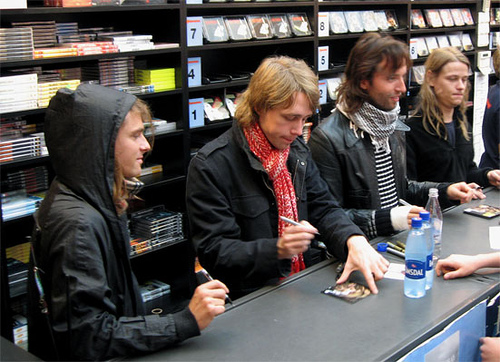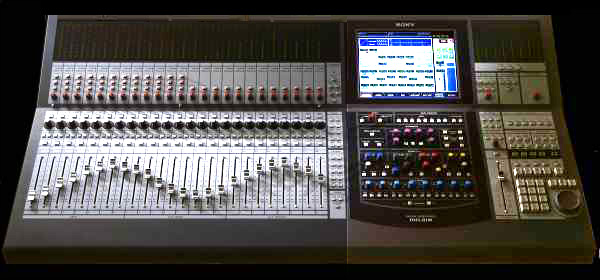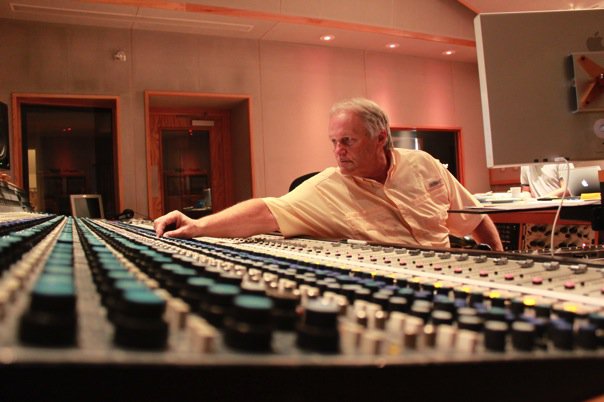|
King Christian (Song)
''Half the World Is Watching Me'' is the second album by Danish alternative rock band Mew, released on their own record label Evil Office in 2000. The album was originally printed in about only 5,000 copies, but has been reissued twice for wider distribution. The reissued version released 4 September 2007 includes a nine-track bonus disc. The original release and the 2007 reissue include a hidden track, "Ending". The final 11 seconds of "Ending" are in fact the first 11 seconds at the start of "Am I Wry? No" before the drums kick in. Track listing Original release # "Ending" – 2:01 # "Am I Wry? No" – 4:53 # "Mica" – 2:58 # "Saliva" – 4:08 # "King Christian" – 4:24 # "Her Voice Is Beyond Her Years" – 4:24 # "156" – 4:46 # "Symmetry" – 5:18 # "Comforting Sounds" – 8:44 To find the hidden track "Ending", which is identified by the purple circle at the center of the disc, start the opening track "Am I Wry? No" and rewind past ... [...More Info...] [...Related Items...] OR: [Wikipedia] [Google] [Baidu] |
Mew (band)
Mew are a Danish alternative rock band, consisting of Jonas Bjerre (lead vocals), Johan Wohlert (bass) and Silas Utke Graae Jørgensen (drums). Johan Wohlert left the band in 2006 before the birth of his first child, but made a return in 2013 while the band were in the studio, before making his first live appearances since his departure in 2014. Guitarist Bo Madsen left the band in June 2015. This was confirmed in a statement on the band's official website on 1 July of the same year. Whilst their music may be classified as indie and on occasion progressive rock, former guitarist Bo Madsen said "I usually say we are 'indie stadium.' A mix between 'feelings' and 'thinking' is usually good." History Origins (1995–2003) Formed in 1995 in Hellerup, an upper-class suburb of Copenhagen, they had a profound impact on the Danish indie scene, emerging alongside the likes of Carpark North, Swan Lee and Saybia, amongst others, in 2003. They released their debut album ''A Triumph for Man ... [...More Info...] [...Related Items...] OR: [Wikipedia] [Google] [Baidu] |
Synthesizers
A synthesizer (also spelled synthesiser) is an electronic musical instrument that generates audio signals. Synthesizers typically create sounds by generating waveforms through methods including subtractive synthesis, additive synthesis and frequency modulation synthesis. These sounds may be altered by components such as filters, which cut or boost frequencies; envelopes, which control articulation, or how notes begin and end; and low-frequency oscillators, which modulate parameters such as pitch, volume, or filter characteristics affecting timbre. Synthesizers are typically played with keyboards or controlled by sequencers, software or other instruments, and may be synchronized to other equipment via MIDI. Synthesizer-like instruments emerged in the United States in the mid-20th century with instruments such as the RCA Mark II, which was controlled with punch cards and used hundreds of vacuum tubes. The Moog synthesizer, developed by Robert Moog and first sold in 1964 ... [...More Info...] [...Related Items...] OR: [Wikipedia] [Google] [Baidu] |
Mastering Engineer
A mastering engineer is a person skilled in the practice of taking audio (typically musical content) that has been previously mixed in either the analog or digital domain as mono, stereo, or multichannel formats and preparing it for use in distribution, whether by physical media such as a CD, vinyl record, or as some method of streaming audio. Education and experience The mastering engineer is responsible for a final edit of a product and preparation for manufacturing copies. Although there are no official requirements to work as an audio mastering engineer, practitioners often have comprehensive domain knowledge of audio engineering, and in many cases, may hold an audio or acoustic engineering degree. Most audio engineers master music or speech audio material. The best mastering engineers might possess arrangement and production skills, allowing them to ' trouble-shoot' mix issues and improve the final sound. Generally, good mastering skills are based on experience, resulting f ... [...More Info...] [...Related Items...] OR: [Wikipedia] [Google] [Baidu] |
Audio Mixing (recorded Music)
In sound recording and reproduction, audio mixing is the process of optimizing and combining multitrack recordings into a final mono, stereo or surround sound product. In the process of combining the separate tracks, their relative levels are adjusted and balanced and various processes such as equalization and compression are commonly applied to individual tracks, groups of tracks, and the overall mix. In stereo and surround sound mixing, the placement of the tracks within the stereo (or surround) field are adjusted and balanced. Audio mixing techniques and approaches vary widely and have a significant influence on the final product. Audio mixing techniques largely depend on music genres and the quality of sound recordings involved. The process is generally carried out by a mixing engineer, though sometimes the record producer or recording artist may assist. After mixing, a mastering engineer prepares the final product for production. Audio mixing may be performed on a mixing ... [...More Info...] [...Related Items...] OR: [Wikipedia] [Google] [Baidu] |
Audio Engineer
An audio engineer (also known as a sound engineer or recording engineer) helps to produce a recording or a live performance, balancing and adjusting sound sources using equalization, dynamics processing and audio effects, mixing, reproduction, and reinforcement of sound. Audio engineers work on the "technical aspect of recording—the placing of microphones, pre-amp knobs, the setting of levels. The physical recording of any project is done by an engineer... the nuts and bolts." Sound engineering is increasingly seen as a creative profession where musical instruments and technology are used to produce sound for film, radio, television, music and video games. Audio engineers also set up, sound check and do live sound mixing using a mixing console and a sound reinforcement system for music concerts, theatre, sports games and corporate events. Alternatively, ''audio engineer'' can refer to a scientist or professional engineer who holds an engineering degree and who designs, dev ... [...More Info...] [...Related Items...] OR: [Wikipedia] [Google] [Baidu] |
Flemming Rasmussen
Flemming Rasmussen (born 1 January 1958) is a Danish sound engineer, record producer, and owner and founder of Sweet Silence Studios in Copenhagen, Denmark. Rasmussen is currently main engineer/producer at Sweet Silence North in Helsingør. Biography Throughout his career, Rasmussen has worked with many different music genres, but is best known for his work with heavy metal. Rasmussen began his career as an assistant at the Rosenberg Studios facility run by producer/engineer Freddy Hansson. In 1976, Hansson founded the Sweet Silence Studios and brought Rasmussen with him. In 1980, Rasmussen became co-owner of the studio, and one year later became an engineer, recording the 1981 album ''Difficult to Cure'' by Rainbow. This subsequently attracted Metallica, who brought in Rasmussen to work on their album '' Ride the Lightning'' (1984). The partnership continued through to the proceeding two studio albums, ''Master of Puppets'' (1986) and '' ...And Justice for All'' (1988). He al ... [...More Info...] [...Related Items...] OR: [Wikipedia] [Google] [Baidu] |
Brass Instrument
A brass instrument is a musical instrument that produces sound by sympathetic vibration of air in a tubular resonator in sympathy with the vibration of the player's lips. Brass instruments are also called labrosones or labrophones, from Latin and Greek elements meaning 'lip' and 'sound'. There are several factors involved in producing different pitches on a brass instrument. Slides, valves, crooks (though they are rarely used today), or keys are used to change vibratory length of tubing, thus changing the available harmonic series, while the player's embouchure, lip tension and air flow serve to select the specific harmonic produced from the available series. The view of most scholars (see organology) is that the term "brass instrument" should be defined by the way the sound is made, as above, and not by whether the instrument is actually made of brass. Thus one finds brass instruments made of wood, like the alphorn, the cornett, the serpent and the didgeridoo, while some ... [...More Info...] [...Related Items...] OR: [Wikipedia] [Google] [Baidu] |
Mellotron
The Mellotron is an electro-mechanical musical instrument developed in Birmingham, England, in 1963. It is played by pressing its keys, each of which pushes a length of magnetic tape against a capstan, which pulls it across a playback head. As the key is released, the tape is retracted by a spring to its initial position. Different portions of the tape can be played to access different sounds. The Mellotron evolved from the similar Chamberlin, but could be mass-produced more efficiently. The first models were designed for the home and contained a variety of sounds, including automatic accompaniments. Bandleader Eric Robinson and television personality David Nixon helped promote the first instruments, and celebrities such as Princess Margaret were early adopters. It was adopted by rock and pop groups in the mid to late 1960s. One of the first pop songs featuring the Mellotron was Manfred Mann's " Semi-Detached, Suburban Mr. James" (1966). The Beatles used it on tracks includ ... [...More Info...] [...Related Items...] OR: [Wikipedia] [Google] [Baidu] |
Tympani
Timpani (; ) or kettledrums (also informally called timps) are musical instruments in the percussion family. A type of drum categorised as a hemispherical drum, they consist of a membrane called a head stretched over a large bowl traditionally made of copper. Thus timpani are an example of kettle drums, also known as vessel drums and semispherical drums, whose body is similar to a section of a sphere whose cut conforms the head. Most modern timpani are ''pedal timpani'' and can be tuned quickly and accurately to specific pitches by skilled players through the use of a movable foot-pedal. They are played by striking the head with a specialized drum stick called a ''timpani stick'' or ''timpani mallet''. Timpani evolved from military drums to become a staple of the classical orchestra by the last third of the 18th century. Today, they are used in many types of ensembles, including concert bands, marching bands, orchestras, and even in some rock bands. ''Timpani'' is an Italian ... [...More Info...] [...Related Items...] OR: [Wikipedia] [Google] [Baidu] |
Percussion
A percussion instrument is a musical instrument that is sounded by being struck or scraped by a beater including attached or enclosed beaters or rattles struck, scraped or rubbed by hand or struck against another similar instrument. Excluding zoomusicological instruments and the human voice, the percussion family is believed to include the oldest musical instruments.''The Oxford Companion to Music'', 10th edition, p.775, In spite of being a very common term to designate instruments, and to relate them to their players, the percussionists, percussion is not a systematic classificatory category of instruments, as described by the scientific field of organology. It is shown below that percussion instruments may belong to the organological classes of ideophone, membranophone, aerophone and cordophone. The percussion section of an orchestra most commonly contains instruments such as the timpani, snare drum, bass drum, tambourine, belonging to the membranophones, and cy ... [...More Info...] [...Related Items...] OR: [Wikipedia] [Google] [Baidu] |
Drum Set
A drum kit (also called a drum set, trap set, or simply drums) is a collection of drums, cymbals, and other auxiliary percussion instruments set up to be played by one person. The player (drummer) typically holds a pair of matching drumsticks, one in each hand, and uses their feet to operate a foot-controlled hi-hat and bass drum pedal. A standard kit may contain: * A snare drum, mounted on a stand * A bass drum, played with a beater moved by a foot-operated pedal * One or more tom-toms, including rack toms and/or floor toms * One or more cymbals, including a ride cymbal and crash cymbal * Hi-hat cymbals, a pair of cymbals that can be manipulated by a foot-operated pedal The drum kit is a part of the standard rhythm section and is used in many types of popular and traditional music styles, ranging from rock and pop to blues and jazz. __TOC__ History Early development Before the development of the drum set, drums and cymbals used in military and orchestral music s ... [...More Info...] [...Related Items...] OR: [Wikipedia] [Google] [Baidu] |






